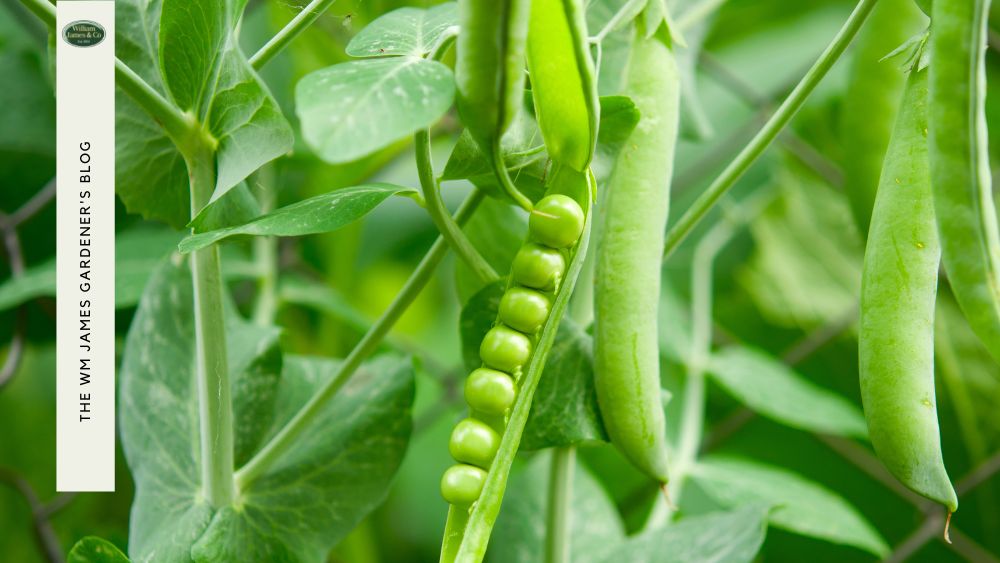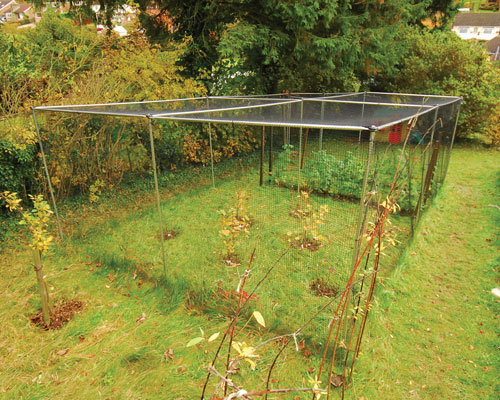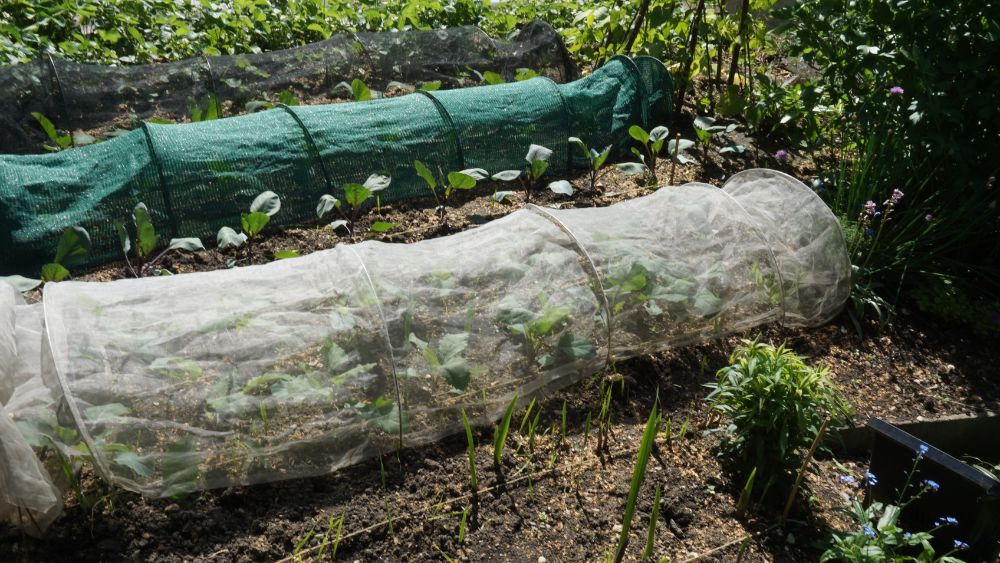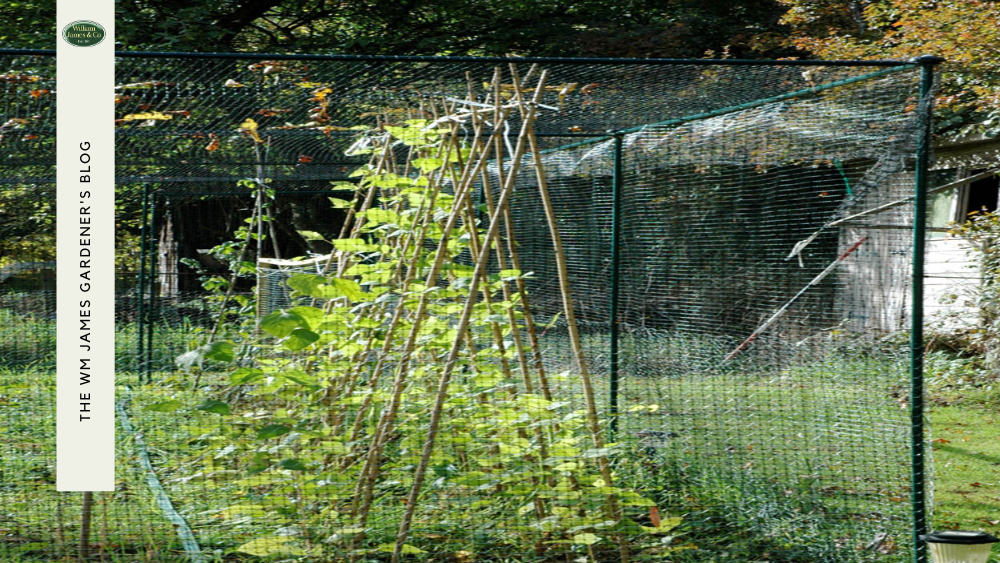We use cookies to make your experience better. To comply with the new e-Privacy directive, we need to ask for your consent to set the cookies. Learn more.
Pea Netting: Keep Your Garden Pests Under Control
- Admin
- WM James Gardening Blog
- 21 Oct 2022
-
27views

Do you have a hard time keeping the pests out of your garden? You may need to invest in some pea netting.
Pea netting is an easy way to keep rabbits, birds, and other critters from eating your plants.
Do you have a hard time keeping the pests out of your garden? You may need to invest in some pea netting.
Pea netting is an easy way to keep rabbits, birds, and other critters from eating your plants. It's also great for keeping crops like peas or beans organised and off the ground and is ideal for supporting your plants. You can find pea netting at most gardening stores or online retailers.
So, what are you waiting for? Protect your garden today with pea netting and save yourself a lot of headaches!
What is Pea Netting?
Pea netting is a type of lightweight netting often used in gardens. Our pea netting is made from green extruded polythene in rolls of 25m. The mesh size is typically small enough to keep pea plants from falling through but large enough to allow for proper air circulation and drainage.
Pea netting is typically deployed around pea plants during the early stages of growth and then removed once the plants have reached a certain height. Pea netting provides support for the climbing plants and also helps to keep the fruit clean and free from debris. It can also provide some protection from pests and birds.

Benefits of Pea Netting
As any gardener knows, pea netting can be a godsend when it comes to keeping peas contained. Not only does it provide support for the vines, but it also helps to keep out pests and protects against some wind damage.
Pea netting can also help to increase yield by providing more surface area for the peas to climb, meaning pea netting is an essential tool for any gardener who wants to maximise their pea crop.
As well as its practical benefits, pea netting can also add a touch of whimsy to the garden! The delicate web of pea vines creates a beautiful network of greenery that is sure to delight family and friends alike. So whether you're looking for a functional way to support your pea crop or a decorative way to add interest to your garden, pea netting is the perfect solution.
The Best Type of Netting for Peas and Beans
There are many types of pea and bean netting available, so it's important to choose the right one for your needs.
Pea netting is typically made from polypropylene or polyethene, both of which are durable materials that will last for years.
Choose a pea or bean netting that is strong enough to withstand winds and heavy rains and will provide the level of protection you need. The mesh size of the netting is also important to consider. A smaller mesh size will keep out smaller pests, but it may also prevent bees from pollinating your plants.

How to Install Pea Netting
Pea netting is relatively easy to install, and it can be reused from year to year (as long as it stays undamaged)!
The first step to installing peat netting is driving some stakes or pegs into the ground around the perimeter of your pea or bean patch. Then, unroll the pea netting and drape it over the stakes. Use zip ties or garden twine to secure the netting in place.
Make sure that the netting is taut so that it doesn't sag in the middle and touch the ground. If the netting sags to the ground, this could damage the plants or alter their growth.
That's all there is to it! With just a few minutes of work, you can have a pea patch that is well-protected against wind and pests.
Downsides to Pea Netting
Pea netting has become a popular way to support climbing plants, but it also has its drawbacks. For one thing, pea netting can be difficult to work with. The small mesh can be tricky to handle, and it's easy to get tangled up in the webbing.
Pea netting can be potentially damaging to plants if it's not made from a suitable material.
It is often used as a temporary solution, meaning that it needs to be removed and replaced every season.

Final Thoughts: Pea Netting
Pea netting is a valuable tool for gardeners since it is a great way to keep your peas and beans safe from pests. It’s also easy to install and can be used for a variety of other plants in your garden. However, there are some drawbacks to using pea netting.
Make sure you shop around for the best quality pea netting before buying and take the time to install it properly, so you and your plants will get the most benefit.
Shop our selection of pea netting and support here!
FAQs
How much pea netting do I need?
The amount of pea netting you need will depend on the size of your pea patch. For a small patch, you may only need a few square feet of netting. For a larger patch, you may need several yards. Our pea netting comes in rolls of 25m.
How do I attach pea netting to my frame?
You can use garden twine, zip ties, or clips to attach the netting to your frame. Make sure the netting is pulled taut, so it doesn't sag in the middle.
What type of frame should I use?
You can use any type of frame that you like. A simple wooden frame will do the trick.
Can I use pea netting to support other plants?
Yes, you can use pea netting to support other types of climbing plants. We recommend using pea netting for supporting runner beans, peas and sweet peas.
What is the best type of pea netting?
The best type of pea netting is made from polypropylene or polyethene. These materials are durable and will last for years. The mesh size of the netting is also important to consider. A smaller mesh size will keep out smaller pests, but it may also prevent bees from pollinating your plants. Choose a pea or bean netting that is strong enough to withstand winds and heavy rains and that will provide the level of protection you need.











